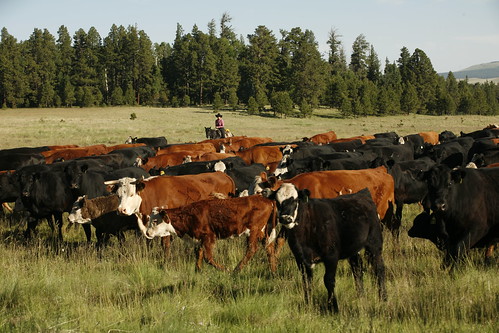
When thinking about national forests and grasslands, your thoughts may at first focus on the incredible abundance of recreation opportunities, wilderness and solitude or perhaps the precious water resources that flow from forest to faucet. But did you know that livestock grazing is also permitted?
Since the agency’s creation in 1906, Congress has authorized regulated grazing through permits. In fact, you’ll find many types of livestock – bison, burros, cattle, donkeys, goats, horse, mules and sheep – grazing on individual national forests or grasslands across the country as part of the Forest Service multiple-use mission. Within U.S. borders, 36 percent of land is considered to be rangelands with 53 percent of western lands considered rangelands. The U.S. Forest Service manages approximately 75 million acres of rangelands, mostly in the West.
Grazing permits allow individuals or organizations the privilege to graze their livestock on a particular forest or grassland based on meeting certain requirements. Individual forests determine what uses are feasible and appropriate for different areas through land management plans.
“I’ve worked with many permit holders who are incredibly grateful for the opportunity to graze their animals on public lands to support their livestock operations,” said Annette Joseph, the Forest Service National Program Manager for Rangelands Management. “Livestock grazing at an appropriate level is part of our mission to support the economic vitality and quality of life in rural America while at the same time ensuring other sustainable and compatible uses.”
Grazing management on rangelands today is a collaborative effort involving landowners, land managers, permit holders, universities, other agencies and the public. More information is available here on cooperative use projects and success stories and managing rangelands together.


